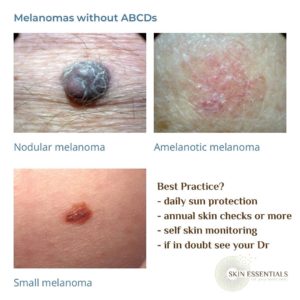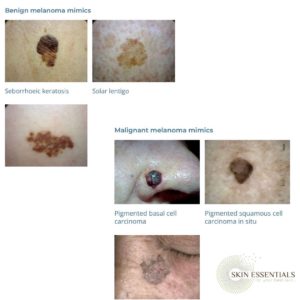Two days a week, I spend long days conducting primarily skin checks on patients and its related sibling, skin cancer surgery under local anaesthetic that does not need sedation.
These days end up being long as the patient load is high, and despite better sun protection awareness, there remain many gaps in our understanding as Australians on what effective sun protection measures mean, and look like, posted elsewhere.
While we are doing better with the Slip, Slop, Slap campaigns, we have some ways to go due to common misunderstandings around what “being in the sun” means and when sun protection is needed (hint: every single day for most of us).
Skin cancer is primarily excessive exposure to UV radiation and is one of the leading causes of morbidity (ie illness) in Australia. Australia has the highest melanoma rates in the world, with the cancer most commonly affecting the young- depending on source,, ages 15-44 or 20-39. In older Australians, cumulative damage to skin cells from sun exposure as early as our childhood, onto incidental sun exposure in our adult years leads to errors in replication in skin cells, eventually leading to pre cancer cells and if not caught and treated, skin cancers- the commonest being basal cell carcinomas (BCC), squamous cell carcinomas (SCC) and melanomas.
While we educate people on what to look out for themselves to monitory for suspicious changes using the ABCDE method, the truth is there are many skin concerns that simply do not follow the rules and having a regular care provider who is familiar with what to look for, who does a comprehensive top to toe look on you using magnification as needed, is best. 

Source: DermNet
Our predisposition to increased skin cancer (and sun damage) rates is due to a few facts:
All these factors combined mean that Southern Hemisphere locations receive around 15% more UV radiation than the equivalent Northern Hemisphere latitude in any given year. (Source cancerwa.asn.au)
While pigment protects us from photoageing as well as provides some degree of sun protection, darker skin is not exempt from sun damage, especially if someone is out a lot, works outdoors or does not use sun protection.
Most of the sun damage occurs before the age of 20, but chronic incidental sun exposure on a day to day basis adds up to many years of cumulative sun damage that begins to show in our 40s and up, whereas melanoma is usually linked to a history of sunburns.
So the best way to protect yourself?
Caught early, skin cancers are easily managed, so don’t delay this important preventive care option!
| Monday: | By agreement only |
| Tuesday: | CLOSED |
| Wednesday: | 10:00 - 17:00 |
| Thursday: | 10:00 – 18:00 |
| Friday: | 09:00 – 17:00 |
| Saturday: | 09:00 – 15:00 |
Skin Essentials will reopen the week beginning 11th October 2021.
Per NSW government regulations, only double vaccinated patients will be served when we reopen and we will be checking vaccination certificates for all patients upon booking. This requirement may change as of December 1st, and we will advise you accordingly.
Please email us (contact@skinessentials.com.au) or text us (0413174654) your vaccination certificate as soon after booking as you can. We will not be able to see anyone for treatments or confirm appointments without this.
In the interest of full disclosure, transparency and patient safety, all patient facing staff will be fully vaccinated by the time of reopening. Please read our reopening FAQ for more information.